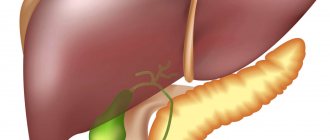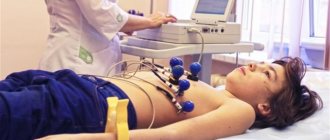Aspiration pneumonia - main symptoms:
- Weakness
- Fever
- Sleep disturbance
- Cardiopalmus
- Vomit
- Dyspnea
- Chills
- Cough
- Chest pain
- Fever
- Hemoptysis
- Blueness of the skin
- Pale skin
- Body aches
- Refusal to eat
- Weight loss
- Violation of the process of defecation
- Discharge of purulent sputum
- Sputum with an unpleasant odor
- Feeling broken
Causes
As already mentioned, the main prerequisite for the development of aspiration pneumonia is the entry of a foreign body or all sorts of liquids into the pulmonary system. Along with the penetration of foreign objects, infection of the bronchi and parenchyma of the organ occurs. This is due to a bacterial or fungal infection.
In addition, it is noteworthy that when a foreign body enters the bronchus, it completely or partially closes its lumen, which leads to acute disruption of the ventilation of the respiratory organ and automatic gluing of a piece of the lung.
It is worth noting that the most common infection manifested in aspiration pneumonia is the gram-positive and anaerobic variety. Experts classify inflammation as a separate category, in which a specific chemical burn occurs due to the ingestion of stomach contents. This pathological condition is called chemical pneumotitis. It often appears in infants. Aspiration pneumonia in newborns is often caused by inept breastfeeding.
As for adults, the factors influencing the occurrence of this pathology can be varied:
- severe drug or alcohol intoxication;
- myasthenia gravis;
- cerebrovascular accidents;
- traumatic brain injury;
- stroke;
- epilepsy;
- general anesthesia;
- neoplasms in the brain;
- Parkinson's syndrome;
- metabolic encephalopathy;
- multiple sclerosis.
Other causes of aspiration pneumonia also play an important role in the development of the pathological condition:
- reflux esophagitis;
- esophageal stenosis;
- achalasia cardia;
- diaphragm hernia.
Why and how aspiration pneumonia develops
During anesthesia, the likelihood of aspiration of gastric contents and, as a result, pneumonia is increased.
Aspiration pneumonia develops as a result of accidental entry into the respiratory tract of foreign bodies or fluid from the oropharynx or stomach. Its direct causative factor is bacteria, and those that under normal conditions inhabit the upper respiratory tract, that is, they are conditionally pathogenic. Half of the cases of the disease are caused by anaerobes (bacteria that do not need oxygen to reproduce and grow), and, as a rule, not just one species, but several at once. In 40% of patients, combinations of anaerobes and aerobes (bacteria whose life activity is impossible without oxygen) were found, and in only 1 out of 10 - exclusively aerobes.
- The main anaerobes that can cause aspiration pneumonia are Prevotella, Fusobacteria, Bacteroides, Veillonella and Streptococcus intermedius.
- As a rule, streptococci, Haemophilus influenzae and Escherichia coli, Klebsiella, Enterobacter, Proteus and Pseudomonas are sown from aerobes.
Although aspiration during sleep occurs in most healthy and not so healthy people, not every time it leads to the development of pneumonia. To do this, it is necessary that the terminal (farthest, smallest) bronchioles reach a large number of virulent (capable of causing disease) bacteria, and local protective factors are not able to counteract them.
Risk factors
The following factors increase the risk of developing aspiration pneumonia:
- severe somatic pathology;
- disorders of consciousness (including general anesthesia - anesthesia);
- acute cerebrovascular accidents;
- swallowing disorders, conditions accompanied by regurgitation (GERD, achalasia cardia, esophageal stenosis or hiatal hernia);
- convulsive syndrome;
- myasthenia gravis, multiple sclerosis, Parkinson's disease, brain tumors;
- dry mucous membranes;
- condition after gastrectomy;
- a tube installed in a patient for the purpose of enteral nutrition;
- infectious diseases of the oral cavity (caries, gingivitis, stomatitis and others);
- overdose of sleeping pills, narcotic drugs, tranquilizers;
- alcoholism (in persons who abuse alcohol, the cough reflex is impaired, immunity is reduced, and the oral cavity and pharynx are inhabited by a large number of pathogenic microorganisms; in a state of alcoholic intoxication, when a person is unconscious, the likelihood of aspiration sharply increases);
- high acidity of the aspirated material;
- the presence of large particles in it;
- the aspirate volume exceeds 25 ml;
- the aspirate contains a large number of pathogenic bacteria.
In most of the pathological conditions mentioned above, the normal pharyngeal reflex is disrupted, and the contents of the oropharynx enter the respiratory tract.
Low pH of the aspirated material (less than 2.5) contributes to the development of chemical pneumonitis (this is a non-infectious inflammatory process in the lung tissue, accompanied by the presence of a large number of neutrophils at the site of inflammation). This disrupts the barrier of the mucous membrane of the respiratory organs, increasing the likelihood of developing bacterial inflammation.
In children, aspiration syndrome can be caused by aspiration of meconium, inhalation of a foreign body by a child, or force-feeding.
A large amount of aspirated material and large particles in it clog the lumen of the respiratory tract, causing stagnation of bronchial mucus, promoting the development of atelectasis and increasing the risk of developing an infectious process in the lungs.
Categories of people susceptible to pneumonia
The risk group for this disease includes those who have experienced the following phenomena:
- respiratory tract injury;
- vomit;
- performing endotracheal procedures, tracheostomy or intubation;
- entry of foreign bodies into the trachea or bronchi.
This pathology occurs in a huge number of children during the first years of life. Its development is explained by the following factors:
- force feeding of an infant;
- meconium aspiration;
- entry of foreign objects into the bronchi.
People suffering from caries, tonsillitis, gingivitis, periodontal disease develop pathogenic microflora in the upper part of the respiratory system and oral cavity. Its penetration into the lower tract can become a prerequisite for infectious pneumonia.
Predisposing factors
A risk factor is impaired consciousness, which is observed in the following conditions:
- alcohol and drug intoxication;
- general anesthesia;
- improper use of medications;
- head injuries.
The likelihood of developing pathology increases with the following factors:
- respiratory diseases;
- diabetes;
- heart pathologies;
- dental diseases;
- disruption of the gastrointestinal tract;
- oncological process;
- intoxication;
- severe vomiting;
- pathologies of the central nervous system.
The pathology occurs as a result of mechanical damage to the airways as a result of trauma and as a result of surgery (intubation).
Clinical picture
Penetration of dense substances or liquid into the lower part of the respiratory system leads to blockage of the damaged area of the bronchial tree. As a result, a cough reflex appears, which causes the aspirate to enter even deeper. The blockage causes part of the lung to collapse and stagnation of bronchial secretions, which significantly increases the risk of infection.
Pathogenic contents aggressively affect lung tissue, which becomes a prerequisite for the development of acute chemical pneumotitis. This pathology is characterized by the release of a huge amount of active substances that damage the parenchyma.
With aspiration pneumonia, severe shortness of breath becomes noticeable, which develops quite quickly even in a completely healthy person. Along with it, an active cough occurs, which does not go away at rest, with physical exertion and with changes in body position.
general description
Aspiration pneumonia is a pulmonary disease in which, as a result of liquids or objects entering the respiratory tract, an inflammatory process is formed in the bronchial trunk and lung tissues. This pathological process is common and ends in death in 30% of cases.
The pathogenesis of aspiration pneumonia is as follows:
- When inhaling a large volume of aspirate, the tracheobronchial tree is subject to mechanical obstruction. This provokes a protective cough reflex.
- The aspirate penetrates the bronchial tree, and pulmonary edema develops.
- Lung atelectasis develops, bronchial secretions stagnate. This leads to a risk of infection of the pulmonary parenchyma.
- Necrosis factors are released, and acute chemical pneumonitis develops.
- Hypoxemia appears, a bacterial component is added, resulting in bacterial pneumonia.
Treatment is selected as a result of the characteristics of the pathological process, many factors in different order.
Pathogenesis in infants
Newborns with this disease show signs of total cyanosis, in which the skin turns noticeably blue. This is evidence of acute respiratory failure.
It is noteworthy that in infants the nervous system is often injured, which manifests itself in the form of convulsions affecting first the facial muscles, and then the whole body.
In older children and adults, the clinical picture develops slowly. Such patients experience difficulty in exhaling after completely normal inhalations. A day after infection, an increase in body temperature is likely.
Symptoms
Almost a quarter of all pneumonias in intensive care units are aspiration.
This infection goes through 4 stages in its development:
- pneumonitis;
- necrotizing pneumonia;
- abscess formation stage;
- empyema of the pleura.
The pathological process is localized mainly in the lower lobes of the lungs on the right (if the person was vertical at the time of aspiration) or in the posterior segments of the upper lobes, the upper segments of the lower lobes (if aspiration occurred in a horizontal position of the patient).
Aspiration pneumonia is characterized by a gradual onset without pronounced clinical symptoms. The person notices weakness, a slight increase in body temperature (37.2-37.5 °C), and coughing. After a few days or weeks, he develops symptoms characteristic of pneumonia:
- cough with phlegm;
- dyspnea;
- pain in the chest, more when breathing, laughing (if the pleura is involved in the pathological process);
- increase in body temperature to febrile values (39 °C and above).
Patients lose weight and show signs of anemia.
After 10-14 days from the moment of aspiration, single or multiple cavities appear in the lungs, filled with purulent-necrotic masses - abscesses, empyema (purulent inflammation) of the pleura is formed. The abscess breaks into the nearest bronchus - the patient notes the discharge of a large amount of purulent sputum with a strong unpleasant odor. Also, the sputum may be bloody (if the purulent masses damage a blood vessel).
A characteristic feature of aspiration pneumonia is the absence of chills in the patient. The reason for this is a pathological process caused by anaerobes.
Symptoms of aspiration pneumonia in adults
Treatment of this pathology depends not only on the causes of its occurrence, but also on the symptoms that appear. After all, first of all, it is necessary to relieve the symptoms that cause the patient maximum discomfort.
In the initial stages, the symptoms of aspiration pneumonia in adults are very subtle and rarely noticed. After the aspiration stage, the patient may experience a dry cough, severe fatigue, and a slight increase in temperature for several days.
A characteristic sign of the disease in both children and adults is an excessively rapid heartbeat. After some time, the symptoms of aspiration pneumonia take on the same outlines as any other types of this pathology. The main features include:
- pain in the chest area;
- slight bluish discoloration of the skin;
- tachycardia;
- dyspnea.
Body temperature can increase to 38-39 degrees, and the cough that begins is gradually supplemented by foamy sputum with possible blood impurities.
Just 2 weeks after infection, an abscess begins in the lung and pleural empyema occurs. The clinical picture is accompanied by the appearance of:
- hysterical cough with purulent sputum and putrefactive odor;
- an increase in temperature to 40-41 degrees with fever.
How does the disease progress?
The course of aspiration pneumonia has a gradual, increasing character. Experts are not always able to make a diagnosis on time. There are four stages of disease development:
- pneumonitis;
- necrotizing pneumonia;
- lung abscess;
- empyema of the lung.
The development of aspiration pneumonia occurs with a decrease in local respiratory tract protection. Each of these stages is characterized by certain symptoms. As inflammation develops, the following manifestations of the disease may occur:
- feeling of weakness and malaise;
- tachycardia;
- chest pain;
- dry cough;
- low-grade fever;
- skin cyanosis;
- fever;
- dyspnea;
- sputum mixed with blood.
Pneumonitis is the first symptom that appears within 1-2 days after aspiration. It is expressed in an increase in temperature within 37.2-37.5 degrees and a dry cough. The patient feels unwell and weak. Gradually the symptoms intensify. There are problems with the breathing process, pain in the thoracic region, cyanosis of the skin and mucous membranes. A dry cough gradually gives way to a wet one. At the same time, there is the release of foamy sputum, which may contain blood particles.
General malaise and high fever
Abscess and empyema of the pleura are observed 1.5-2 weeks after aspiration. At this stage, there is an increase in temperature and the release of pus with a very unpleasant odor. If there is destruction in the lung tissue, there may even be hemoptysis. A characteristic feature of this type of pneumonia is that there is no chills.
In newborns, aspiration pneumonia can develop from swallowing amniotic fluid, as well as from improper feeding. Most often, premature babies are susceptible to this disease. Signs of inflammation do not appear immediately. At the beginning of the development of the disease, cyanosis and problems with apnea may be observed. The skin acquires a gray tint, which serves as the basis for diagnosis. Body temperature may not rise. During auscultation, harsh breathing and wheezing can be observed. Tachycardia may also be present.
The symptoms of the disease can vary significantly, depending on the nature of how the foreign body entered the lungs and what type it is. Some may have no symptoms, while others may develop serious breathing problems.
Diagnostics
Aspiration pneumonia is not as easily detected as other types of this disease, due to the specific clinical picture. A patient suspected of such a diagnosis is prescribed an auscultatory examination of the lungs to determine wheezing in different places and crepitus.
The presence of pathology in the body can be assumed based on the history of aspiration. The diagnosis is confirmed by endoscopic, microbiological, physical and x-ray examination. The last version of the study allows for a thorough examination of the chest cavity and determines inflammatory processes and atelectasis in the parenchyma.
Treatment of aspiration pneumonia
In case of penetration of foreign objects into the airways and development of obstruction, their endoscopic removal and mandatory oxygen therapy are carried out. In difficult cases, it may be necessary to intubate the trachea and connect the patient to a mechanical ventilation system.
Treatment of aspiration pneumonia must certainly include antibiotics, selected depending on the sensitivity of the pathogenic microflora to them. It is best to use several different antibacterial medications at the same time. The duration of treatment is at least two weeks.
If an abscess forms, it is drained. To speed up the removal of purulent sputum, the patient is given a vibration or percussion chest massage several times during the day. In addition, sanitary bronchoscopy is performed to eliminate pus, as well as bronchoalveolar therapy.
Indications for surgical intervention:
- the occurrence of bronchopleural fistula;
- lung abscess with an area of more than 8 cm;
- bleeding in the respiratory organs.
If a patient diagnosed with aspiration pneumonia has a complication in the form of pleural empyoma, the pleural cavity is drained, as well as its sanitation. If necessary, special fibrinolytics and antibacterial agents can be delivered to the damaged area through drainage.
Symptoms of the disease
It is difficult to determine pneumonia by initial signs, since the symptoms of the disease are similar to other diseases and increase with the development of pathology. Even doctors do not always make an accurate diagnosis, so at first they prescribe general medications. The disease has 4 stages:
- the appearance of pneumonitis - damage to the pleural tissue of the lungs;
- addition of necrotizing inflammation;
- development of a lung abscess - the formation of a cavity filled with pus;
- inflammation of the pleural layers.
As soon as the patient exhibits aspiration, the body temperature begins to rise to 38°C and a nonproductive cough develops. The patient feels lethargy, loss of strength and psychological discomfort. If treatment is delayed, breathing difficulties appear and pain is felt in the chest area. The temperature rises higher and higher, and the color of the mucous membranes and skin changes to bluish. Quite soon the patient notices a cough syndrome with foamy sputum, and sometimes with blood clots. Two weeks is enough for pneumonitis to turn into empyema and abscess. The readings on the thermometer rise to critical limits, and pus begins to be released along with the cough. The patient is bothered by hemoptysis and putrid odor from the mouth.
Symptomatic therapy
To lower the temperature, you can use non-steroidal anti-inflammatory medications: for example, Diclofenac and Ibuprofen. To eliminate a fungal infection after antibiotic therapy, you can use Fluconazole.
It is very important to maintain a drinking regime during treatment. If we are talking about severe dehydration, specialists administer crystalloid drugs intravenously. If the patient experiences any concomitant pathology, symptomatic therapy is necessary.
Features of treatment for children
Treatment of pathology in newborns has a lot of differences.
For children in the first days of life, Ampicillin is used in combination with aminoglycoside antibiotics. And in case of intolerance to such medications, third generation cephalosporins are used - for example, Ceftriaxone.
Babies aged from one month to six months are often prescribed macrolides: for example, Azithromycin. If inflammation develops quite quickly, then these drugs are supplemented with protected penicillins: Amoxiclav and Augmentin. In case of intolerance to these drugs, third generation cephalosporins, Ceftriaxone, are used.
Children older than six months undergo the same treatment regimen, but with larger dosages.
Together with the described therapy, vitamin complexes are used in the form of combined preparations. After treatment with antibacterial medications, it is mandatory to stabilize the intestinal microflora with the help of probiotics: for example, Linex and its analogues.
For aspiration pneumonia in children over five years of age, therapy involves the use of antibiotics, but using fluoroquinolones: Ciprofloxacin and Moxifloxacin. If necessary, it is possible to supplement treatment with carbopenems - for example, Meronem.
Therapy methods
The treatment of aspiration pneumonia is based on antibacterial therapy. The course of antibiotic treatment lasts for 2 weeks. Often prescribed drugs:
- Ampicillin.
- Azithromycin.
- Amoxicillin.
- Tsiprolet.
In addition to antibiotics, anti-inflammatory, mucolytic, and bronchodilator drugs are prescribed. In combination with drug therapy, the following manipulations are performed:
- drainage of abscesses;
- chest massage;
- tracheal aspiration of secretions;
- bronchopulmonary lavage.
If the abscess is large, fistulas have formed, or pulmonary hemorrhages have formed, then surgical intervention is performed.
In advanced cases, pleurectomy with lung decortication is prescribed. At the end of therapy, follow a diet and take a course of probiotics, as well as a course of physical therapy.
Possible complications
This pathology can lead to more severe consequences, such as:
- acute respiratory failure;
- sepsis;
- pleural empyema;
- bronchopulmonary fistulas.
In children, if an infection occurs, rapid destruction of lung tissue may develop, as well as the occurrence of an abscess, pleurisy, and the same empyema.
The consequences of aspiration pneumonia in newborns can lead to toxic damage to the central nervous system and other syndromes that are difficult to treat. In the case of severe pathology, the baby may develop total lung atelectasis.
Forecasts
In case of timely detection and effective treatment, the overall picture of the patient’s condition should be favorable. The prognosis worsens significantly if any complications develop. Mortality in acute forms of the disease is approximately 20-25%.
The prognosis for pathology in newborns is determined individually, since the exact reaction of the baby’s weak body to inflammation is unknown. It is favorable for children over two years of age. True, only subject to timely and effective treatment.
Prevention
Preventing the development of aspiration pneumonia consists of the following measures:
- compliance with breastfeeding rules for at least one year;
- instilling in children healthy eating habits;
- in case of impaired swallowing, therapy with medications that affect the nervous system;
- in case of pathology in bedridden patients, it is important to establish the correct position - the head should rise above the body at an angle of 30 degrees;
- intensive care patients must undergo oral sanitation;
- skillful management of mechanically ventilated patients.
Prevention of aspiration pneumonia should be aimed at intensive treatment of pathologies associated with this disease.










